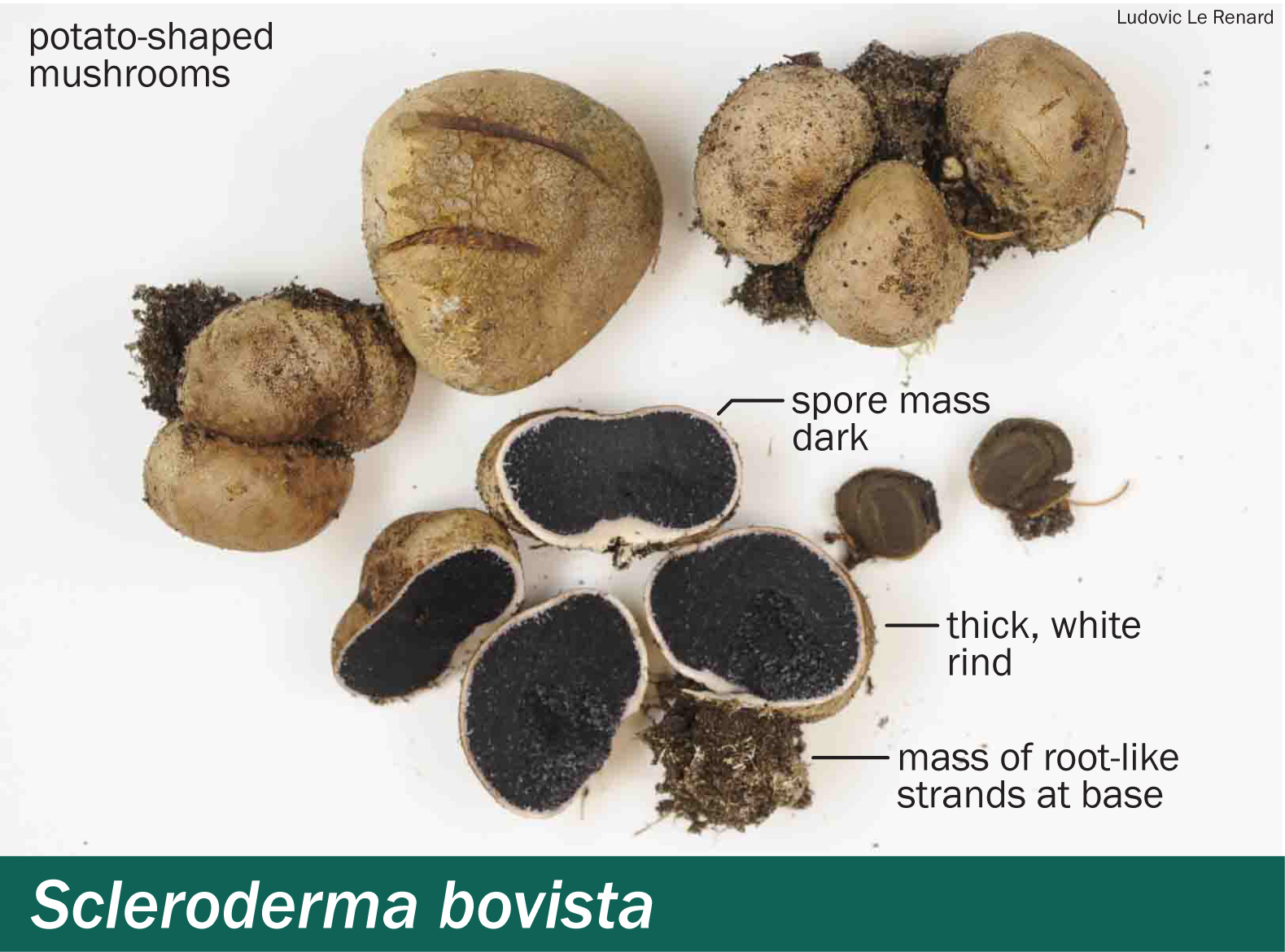Scleroderma bovista — Potato earthball
Odour: None or mild when fresh, unpleasant when old.
General form: Potato-shaped 1.5-8 cm in diameter, yellowish brown, mostly smooth but with small scales and cracks. White thread-like strands of mycelium often radiate from the base.
Outer layer, "peridium": 1-3 mm thick, tough, whitish in cross section.
Inner tissue, "gleba": Initially white but soon turning dark purplish grey, to brown or black.
Spores: 9.5-16 (-19.5) µm including the ornamentation, which is a network of interconnected ridges and spines 1.6-3.5 µm tall; spores are dark brown or black.
Spore release: The outer wall dries and cracks open to release spores (unlike puffballs that open with a rounded pore).
Habitat: growing on soil, mostly above ground. Associated with various trees including red oaks (Quercus spp.), birch (Betula spp.), pines (Pinus spp.) and Douglas fir (Pseudotsuga menziesii)1; ectomycorrhizal.
Geographical range1: Widely distributed in the Northern Hemisphere and likely introduced to the Southern Hemisphere along with its host trees.
Unlike an edible truffle (Tuber species), earthball species have no odour when fresh and a revolting odour when old. Also unlike truffles (Tuber species), the earthball's inner tissue is uniformly coloured, not marbled with white veins. Tuber species do not develop a powdery spore mass.
Other Scleroderma species, recognizable as earthballs due to their thick rinds and blackish spore masses are also found in our region, and they are also poisonous.
Toxins: Unidentified gastrointestinal irritants.
Symptoms: Time of onset, 10 min to 5 hours5. Vomiting, stomach cramps, watery diarrhea becoming bloody, and muscle rigidity in severe cases6.
Treatment: Contact your regional Poison Control Centre if you or someone you know is ill after eating any earthballs. Poison Centres provide free, expert medical advice 24 hours a day, seven days a week. If possible, save the mushrooms or some of the leftover food containing the mushrooms to help confirm identification.
Poison Control:
British Columbia: 604-682-5050 or 1-800-567-8911.
United States (WA, OR, ID): 1-800-222-1222.
Cases of poisoning by Scleroderma species:
Mistaking earthballs for truffles or puffballs has resulted in numerous poisonings along the west coast and across North America5,7.

